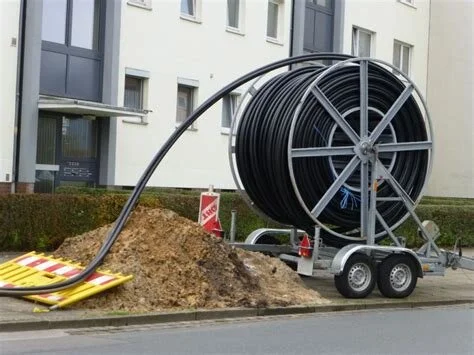Broadband Services Allocated $65 billion of Funding in 2021 Infrastructure Bill
The Infrastructure Bill Provides Deep Funding For Broadband Projects
Key Takeaways
$65 billion of broadband funding is included in the 2021 Infrastructure Investment and Jobs Act, including $45 billion of grants for expansion of broadband services through a Broadband Equity, Access and Deployment program
The Act contains $2 billion of grants to extend the Tribal Broadband Connectivity Program and $18 billion of funding for other initiatives and cybersecurity
The Act's goal is to bring broadband service to "unserved" and under-served areas.
Broadband speed is defined as 25 megabits per second for downloads and 3 megabits per second for uploads.
The Senate passed the 2021 Infrastructure Investment and Jobs Act (H.R. 3684) in July 2021, and the House passed a revised version in November 2021. After some final tweaks, the Act will become law. The Act contains over $1 trillion in grants and loans for highways, renewable energy, rail, electric vehicles, battery storage, electric grid resiliency, and other areas. The Act’s major broadband funding is a $45 billion Broadband Equity, Access and Deployment program that includes grants to expand broadband services. The broadband components are summarized in this article.
Focus on Broadband Services in unserved and underserved areas
Telecommunications services include cable TV, internet, business, and broadband internet phone services. The focus of part of the Act is to make broadband services available to unserved and underserved areas. Private telecommunications companies have been serving smaller communities and rural areas. However, regions of the United States still do not have "broadband" services, as defined by the Federal Communications Commission (FCC) as a minimum of 25 Mbps (megabits per second) download speed and 3 Mbps upload speed.
Initial eligibility for funding will be based on Broadband DATA maps provided to the Federal Communications Commission under current statutes. These maps identify served and unserved areas and will be used in defining eligible project for funding.
The Act details its prioritization scale for project awards from the Broadband Data maps on these criteria:
Deployment of broadband networks to poverty counties or high-poverty areas
The speed of the proposed services
The project expediency for completion
The focus within those priority areas is to serve unserved areas and those areas that do not currently have broadband speeds.
Grants available for broadband projects
Highlights of grants available for broadband services include:
Grant allocations of $100 million per state
Grant allocations of $100 million for United States territories
Each state must submit a five-year action plan outlining locations that should be priorities, their recommendation on serving unconnected areas and a timetable for service
The remaining funds will be grants for projects based on the ranking criteria
Grants require a 25% match by the grant recipients
In-kind contributions can count towards the 25% match
Additional funding is provided for the Tribal Broadband Connectivity Program ($2 billion), Middle Mile grant program ($1 billion), and several other programs
Funds are available for private businesses, electric cooperatives, public or private utilities, public utility districts, local governments, and non-profit organizations. The projects must provide services within 4 years of funding and deliver service of 100 megabits per second for downloads and 20 megabits per second for uploads.
What's next?
This article was written to report on the initial program outlines for broadband project grant funding. As the program's administrative infrastructure (pun intended) is developed for applicants, we will provide more details on how applicants can assemble and submit their applications, and some of the considerations involved in deciding whether to proceed. A solid business plan, including feasibility analysis and projected financial results, is necessary, just like any other project evaluation.
About Russ Hissom - Article Author
Russ Hissom, CPA is a principal of Utility Accounting & Rates Specialists a firm that provides power utilities rate, expert witness, and consulting services, and online/on-demand courses on accounting, rates, FERC/RUS construction accounting, financial analysis, and business process improvement services. Russ was a partner in a national accounting and consulting firm for 20 years. He works with electric investor-owned and public power utilities, electric cooperatives, broadband providers, and gas, water, and wastewater utilities. His goal is to share industry best practices to help your business perform effectively and efficiently and meet the challenges of the changing power and utilities industry.
Find out more about Utility Accounting & Rates Specialists here, or you can reach Russ at russ.hissom@utilityeducation.com.
The material in this article is for informational purposes only and should not be taken as legal or accounting advice provided by Utility Accounting & Rates Specialists. You should seek formal advice on this topic from your accounting or legal advisor.

